OCNC2009
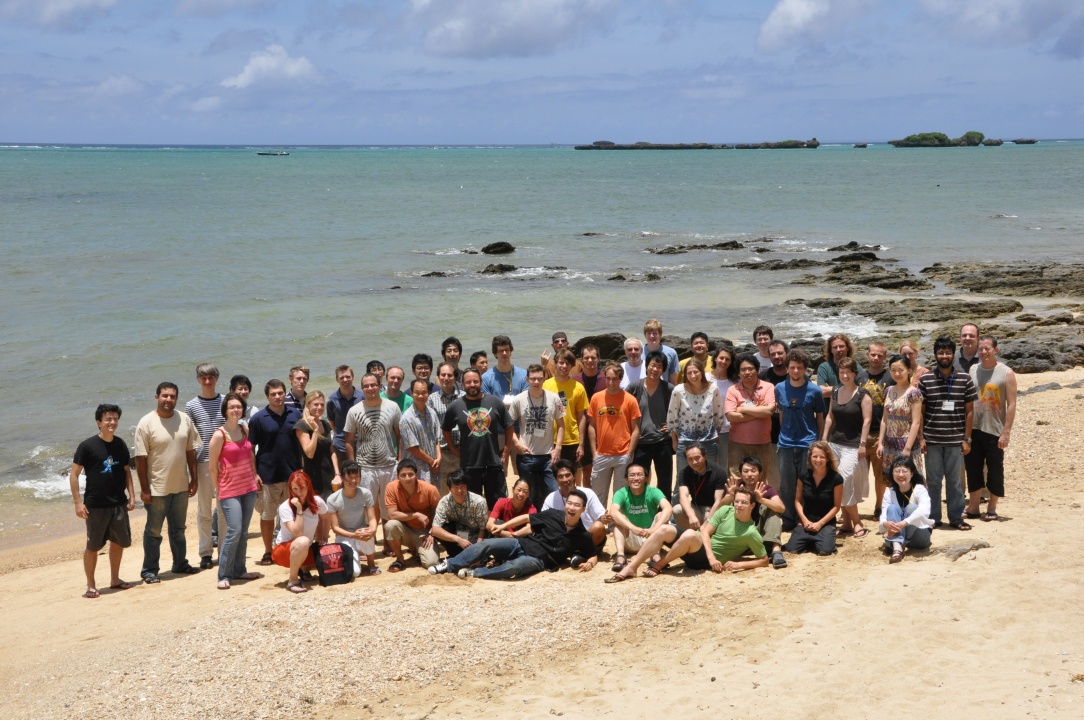
Okinawa Computational Neuroscience Course 2009
June 15 - July 2, 2009 in Okinawa, Japan
The sponsor will provide lodging and meals during the course and support travel for those without funding. We hope that this course will be a good opportunity for theoretical and experimental neuroscientists to meet each other and to explore the attractive nature and culture of Okinawa, the southernmost island prefecture of Japan.
Schedule
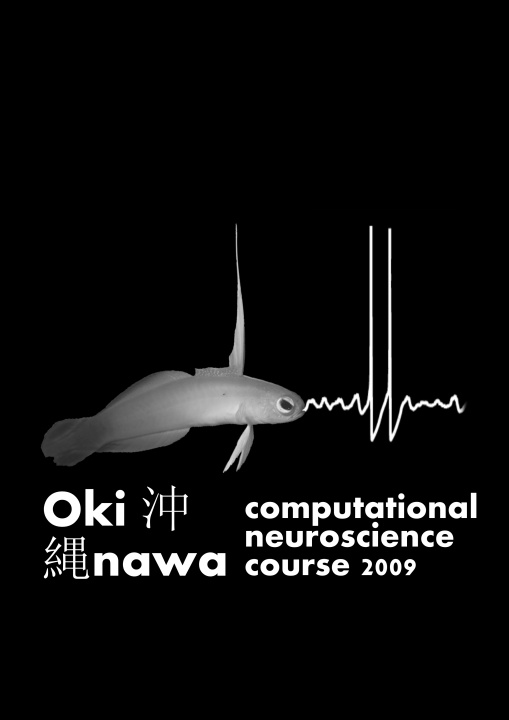 A list of lecture topics can be found at program below.
A list of lecture topics can be found at program below.
- January 5:
- Application process opens
- February 19:
- Application process closes
- Mid March:
- Notification of acceptance
- End March:
- Confirmation of acceptance
- June 14:
- Arrival
- June 15-20:
- Methods
- June 22-27:
- Neurons, Networks and Behaviors I
- June 29-July 2:
- Neurons, Networks and Behaviors II
- July 3:
- Departure
Organizers
- Erik DeSchutter
- Kenji Doya
- Klaus Stiefel
- Jeff Wickens
Lecturers
Bartos, Marlene Câteau, Hideyuki De Schutter, Erik - Doya, Kenji
Fukai, Tomoki Gewaltig, Marc-Oliver Häusser, Michael Knöpfel, Thomas Mainen, Zachary Paninski, Liam Prescott, Steven Redish, David - Sinclair, Robert
Stevens, Charles - Stiefel, Klaus
Stuart, Greg - Wickens, Jeff
Wolpert, Daniel
Tutors
- Akemann, Walther
- Cannon, Robert
- Gunay, Cengiz
- Kriener, Birgit
- Le Franc, Yann
- Van der Meer, Matthijs
- Wang, Ping
- Zhu, Junmei
OCNC 2009 Program
Week 1: Methods (Jun 15-20)
Monday, June 15
- 9:30-9:45
- Introduction (De Schutter, Doya, Stiefel, Wickens)
- 09:45-12:45
- Parallel track:
Biologists:
SinclairIntroduction to numerical methods for ordinary and partial differential equations Theoreticians:
WickensNeurobiological challenges for theoreticians
- 14:00-16:00
- Student poster presentations I
- 16:00-18:00
- Student poster presentations II
Tuesday, June 16
- 09:30-12:30
KnöpfelIntroduction to modeling voltage-gated channels + interpretation of imaging data
- 14:00-17:00
-
Introduction of Tutors;
Student project guidance
Wednesday, June 17
- 09:30-12:30
StiefelIntroduction to modeling morphologically detailed neurons
- 14:00-17:00
StiefelNEURON tutorial
- 17:00-18:00
-
Computing cluster tutorial
Thursday, June 18
- 09:30-12:30
CâteauAnalytical and numerical methods of characterizing a population of neurons and synapses
- 14:00-17:00
GewaltigNEST tutorial
Friday, June 19
- 09:30-12:30
DoyaIntroduction to decision making and Bayesian inference
- 14:00-16:00
-
Seminar room: Matlab tutorial followed by Pandora demo
Meeting room 1: PSICS and STEPS demos
- 16:00-17:00
StevensWhy is theory necessary in neuroscience?
Saturday, June 20
- 09:30-12:30
De SchutterIntroduction to modeling biochemical reactions, diffusion and reaction-diffusion systems
- 14:00-18:00
- Project work or meeting with Dr. Câteau or Dr. Gewaltig
Week 2: Neurons, Networks and Behavior I (Jun 22-27)
Monday, June 22
- 09:30-12:30
StevensUse of self-similar functions to describe axonal and dendritic arbors
- 14:00-18:00
- Project work or meeting with Dr. Knöpfel or Dr. Sinclair
Tuesday, June 23
- 09:30-12:30
-
BartosNeuronal oscillations in cortical networks BartosMechanisms underlying neuronal network synchronization
- 14:00-18:00
- Project work or meeting with Dr. Stevens or Dr. De Schutter
Wednesday, June 24
- 09:30-12:30
PaninskiStatistical models for neural encoding, decoding, and optimal stimulus design
- 13:45-14:15
- New campus tour
- 15:00-16:20
- Lab tour (20 min x4)
Group A: Wickens -> Stiefel -> Doya:robots -> Doya:rats
Group B: Doya:robots -> Doya:rats -> Wickens -> Stiefel
- 16:30-18:00
- Faculty discussion meetings or Excursion
Stiefel: IRP seminar room
Wickens: IRP lobby
Doya: Doya Unit meeting room
Excursion: Katsuren Castle
- 18:45
- Back in Seaside House
Thursday, June 25
- 09:30-10:50
StuartThe action potential I
- 11:10-12:30
HäusserThe action potential II
- 14:00-18:00
- Project work or meeting with Dr. Bartos, Dr. Paninski or Dr. Stuart
Friday, June 26
- 09:30-12:30
RedishCognition in the hippocampus
- 14:00-18:00
- Project work or meeting with Dr. Redish or Dr. Häusser
Saturday, June 27
- 09:30-12:30
-
StuartDendrites I HäusserDendrites II
- 14:00-18:00
- Project work
Week 3: Neurons, Networks and Behavior II (Jun 29-Jul 2)
Monday, June 29
- 09:30-12:30
PrescottAnalyzing neuronal excitability using simple models
- 14:00-18:00
- Project work
Tuesday, June 30
- 09:30-12:30
WolpertComputations in human sensorimotor control
- 14:00-18:00
- Project work or meeting with Dr. Wolpert
Wednesday, July 1
- 09:30-12:30
FukaiModeling recurrent neuronal networks through activity-dependent synaptic plasticity
- 14:00-18:00
- Project work or meeting with Dr. Fukai or Dr. Mainen
Thursday, July 2
- 09:30-12:30
MainenNeural mechanisms for odor-guided decisions in the rat
- 14:00-18:00
- Project presentations
Students
- Acimovic, Jugoslava
- Alcamí, Pepe
- Burke, Chris
- Cabral, Joana
- Cazé, Romain
- Funamizu, Akihiro
- Goto, Junichi
- Huh, Ben Dongsung
- Hunt, Jonathan
- Kwan, Alex
- Ledergerber, Debora
- Mathis, Alexander
- Nakae, Ken
- Negrello, F., Mario J.
- O'Donnell, Cian
- Petersson, Marcus
- Ramaswamy, Venkatakrishnan
- Riachi, Imad
- Roome, Chris
- Salimpour, Yousef
- Sato, Masaaki
- Sharot, Tali
- Shimizu, Yu
- Stetter, Olav
- Strüber, Michael
- Vinnik, Ekaterina
- Vintch, Brett
- Waddington, Amelia
- Wimmer, G.Elliott
- YU, Wan-Qing
Walther Akemann
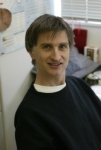
|
Affiliation: |
Laboratory for Neuronal Circuit Dynamics RIKEN Brain Science Institute Tokyo, Japan |
|
About: |
It is my pleasure to participate in OCNC 2009 as a tutor. My background is in physics, physical chemistry and neuroscience. After my doctorate I have been working as a postdoc at the Research Center in Jülich (Germany), the Nuclear Energy Agency in Gif-sur-Yvette (France) and the University of Paris XI (France). Presently I am a staff scientist at the Institute for Physical and Chemical Research (RIKEN) in Tokyo (Japan). My main interest is the optical imaging of electrical brain signaling and computer simulation of neuronal circuits. I welcome all participants of OCNC 2009 and wish the course to foster new insights and learning experiences that will inspire your future scientific work, collaborations and careers. I am looking forward to meet with you and share the excitement of advanced studies in neuroscience and beyond. |
Jugoslava Acimovic

|
Affiliation: |
Computational Neuroscience and Computational Systems Biology group Tampere University of Technology FINLAND |
|
About: |
My name is Jugoslava, and I am a postdoctoral researcher at Tampere University of Technology. I moved to Finland in January, after completing a PhD at Ecole Polytechnique Fédérale de Lausanne, Switzerland. In Lausanne, I worked on a project focused on in-vivo data analysis, obtained from experiments on monkeys. The aim was to study signals present in Posterior Parietal Cortex during reaching and saccadic movements toward visual or memorized targets. While working on signal processing and machine learning analysis of experimental data, I became interested in mechanisms responsible for generating neural activity patterns, in addition to decoding information from such activity. I joined Computational Neuroscience group in Tampere aiming to study 2D networks of neurons cultured on MEA plates. I am working on computational models able to describe properties of these cultures. The influence of network topology on the observed activity patterns is particularly interesting for me. I am looking forward to meet you in Okinawa. |
Pepe Alcamí
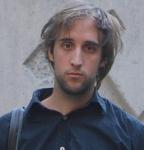
|
Affiliation: |
Alain Marty’s lab Ecole Normale Supérieure (Ulm) Paris FRANCE |
|
About: |
My background is essentially biology: I studied biology in Madrid, a master in neuroscience at ENS, and some complementary physics, cognition and modeling courses during this year. My research experience ranges from histology and behavior (Instituto Cajal), cell biology and electrophy (Scemes and Spray labs, AECOM), electrophy (Marty lab, current research) and some modeling (Destexhe lab). My long-term goal? Try to understand how information is processed at single cells –neurons and glia-, how it travels in networks, and emerging computational properties. I am currently focusing on single neuron and single synapse levels and my general goal is to study the implications of processing from this microlevel to the macrobehavior of neural networks, and hopefully link it to behavior. The model I work on now is the network of molecular layer interneurons in the cerebellar cortex. I hope to learn a lot of concepts, methods and approaches in theoretical neuroscience during the course, in order to answer these questions at the frontier between biology and physics. Looking forward to meet you all in Okinawa! |
Marlene Bartos

|
Affiliation: |
Institute of Medical Sciences (IMS) University of Aberdeen (UK)
|
|
About: |
I studied biology and received my PhD in Munich (Germany). During my PhD I studied the generation of rhythmic motor patterns in invertebrates. I continued this interest by joining 1995 the University of Pennsylvania (Philadelphia) where I collaborated with Mike Nusbaum and Eve Marder (Brandeis, USA) on motor pattern generators in crabs. Next, I went out to study the cellular basis for oscillations in ‘more complex’ neuronal networks in the hippocampus of rodents by joining 1998 as Assistant Professor the Institute of Physiology in Freiburg (Germany). Since 2007 I am Associate Professor at the Institute of Medical Sciences in Aberdeen (UK). My work is focused on the cellular basis of information processing in the rodent brain; mechanisms underlying network oscillations; rules of synaptic plasticity in the mature and developing brain. My ambition is to understand how information is processed, stored and retrieved in neuronal networks. If you would like to know moreabout me, my group members and/or our work, please feel free to contact my via e-mail (m.bartos@abdn.ac.uk) or visit my web page at http://www.abdn.ac.uk/ims/staff/details.php?id=m.bartos. Message: I have never been in Okinawa, but from the diverse pictures of the island and from the list of lecturers attending the OCNC2009, I have the very strong impression, that it is one of the best places to spend a summer course on computational neuroscience. First, the island looks beautiful. Second, the course will be attended by senior experts in experimental and computational neuroscience. Third, it will be joined by highly motivated young scientists. Thus, the course offers scientists a fantastic opportunity to learn computational methods in an excellent environment, to exchange thoughts on the various aspects in neuroscience presented at the lectures and beyond and to establish social networks among the attendees. In summary, I am looking very much forward to meet you all in Okinawa. |
Chris Burke

|
Affiliation: |
Schultz Lab University of Cambridge UK |
|
About: |
My name is Chris Burke, I'm a 3rd year PhD student at Cambridge University. I'm interested in the social influences on decision-making, learning and reward. At the moment my project is looking at how we learn from others, and where this information is being processed in the brain. |
Joana Cabral

|
Affiliation: |
Theoretical and Computational Neuroscience Group Universitat Pompeu Fabra, Barcelona SPAIN |
|
About: |
Dear all, my name is Joana and I feel very lucky to participate in OCNC 09! I can't wait to share this amazing experience with all of you! I am portuguese but I live in Barcelona for a year already, where I am doing research in large-scale brain networks to investigate the Resting State activity (I'd be glad to provide more details in a face to face conversation). Before this I did a MSc in Biomedical Engineering in Lisbon and a short intership in Manipal, India. Although I have travelled a lot, Okinawa will be the farthest place I've ever been, but it's a small world and we all share the same sun! |
Robert Cannon
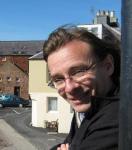
|
Affiliation: |
Textensor Limited, Edinburgh, UK |
|
About: |
Having been a tutor here before, I am very much looking forward to OCNC again this year. After some time as a postdoc in astrophysics and then neuroscience I switched to the private sector and now run a small software company involved in consultancy and contract development in mathematical modeling particularly for neuroscience. Recently we have developed PSICS, www.psics.org, an open source simulator for neurons with stochastically gated ion channels, in conjunction with Matt Nolan's group at the University of Edinburgh. It lets modelers explore how the discreteness of channel positions and gating affects the activity of neurons, including mechanisms that may play a key role in achieving certain functions. We are also involved in the development of reaction-diffusion models and the standardization of model description formats (NeuroML) to facilitate the validation, reuse and archiving of models. |
Romain Cazé

|
Affiliation: |
Laboratoire de neurosciences cognitives Ecole Normale SupÈrieure Paris FRANCE |
|
About: |
Hi everybody. I'm Romain Cazé and I work in Paris in a dynamic and friendly group of theoretical neuroscientists (physicists, biologists, engineers) directed by Boris Gutkin, Christian Machens and Sophie Deneve. We work on a broad variety of different topics ranging from single neuron analysis to Bayesian inference in neural networks. My main training is in Biology and probability and I'm particularly interested in stochasticity and learning. See you soon in Okinawa. between spatially distant regions. I want to use computational models to explore the neuronal bases of the changing connectivity patterns I observe. |
Hideyuki Câteau

|
Affiliation: |
RIKEN BTCC |
|
About: |
Hideyuki Câteau recently started his laboratory to study visual information processing by combining experimental and theoretical methods. He got PhD in Physics. He joined RIKEN in 1994 and studied synaptic plasticity. Upon his move to a project headed by Dr. Fukai, he started applying Fokker-Planck (FP) equation to neuroscience and found its usefulness in the synfire chain and spike-timing-dependent plasticity. He moved in 2002 to New York University to work with Dr. Reyes and applied and found an essential role of colored noise in the in vitro synchronization. He got back to RIKEN in 2005 and has been there since then. Message: A summer course will provide you with a precious opportunity to overcome language barrier, expertise barrier, cultural barrier etc. Please take this opportunity to cultivate something enduring throughout your academic carrier. |
Erik De Schutter
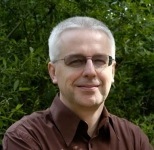
|
Affiliation: |
Computational Neuroscience Unit Okinawa Institute of Science and Technology |
|
About: |
Welcome to Okinawa! I moved to this beautiful island two years ago. My first visit to Okinawa was as faculty of OCNC2006 and I immediately liked the place and the beautiful views of the East China Sea from Seaside House. So it should come as no surprise that my lab space is now in the Seaside House, where the course takes place. You already know my secretary Tsuyuki and during these 3 course weeks the lab will hold open house and welcome all students and faculty to visit and use our facilities (but don’t move books or equipment out of the lab please). I have been teaching for more than 10 years at European CNS summer schools and was part of the last three OCNCs. It is always exciting to meet the diverse groups of highly motivated young scientists attending our courses. Summer courses have an important function in teaching computational methods and approaches, and in establishing social networks among the participants. Ideally every neuroscientist, including experimentalists and clinicians, should attend a CNS course because computational methods have become essential tools to understand the complex systems we are studying. There is a broad range of modeling approaches available. I have specialized in data-driven, bottom-up methods that are very accessible to experimentalists as they are mainly parameter driven. This includes large compartmental models of neurons with active dendrites, networks with realistic connectivity using conductance based neuron models and reaction-diffusion models of molecular interactions. I will focus on the latter during my methods presentation, but please feel free to ask me or my collaborators about our other work! |
Kenji Doya
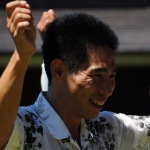
|
Affiliation: |
Neural Computational Unit Okinawa Institute of Science and Technology |
|
About: |
Kenji Doya took BS in 1984,MS in 1986,and PhD in 1991 at the University of Tokyo. He became a research associate at U.Tokyo in 1986, U.C. San Diego in 1991, and Salk Institute in 1993. He joined ATR in 1994 and is currently the head of Computational Neurobiology Department, ATR Computational Neuroscience Laboratories. In 2004, he was appointed as a Principal Investigator of Neural Computation Unit, Okinawa Institute of Science and Technology. He serves as a co-editor-in-chief of Neural Networks and a board member of International Neural Network Society. He is interested in understanding the functions of basal ganglia and neuromodulators based on the theory of reinforcement learning. Message: Welcome to OCNC 2009! I hope what you experience here in Okinawa, not only the lectures and the projects but also the variety of people at the course and the nature and culture of this fine island, will be the most exciting and valuable ones. I myself has been benefitting a lot from the courses and am looking forward to see what I can learn this time. |
Tomoki Fukai

|
Affiliation: |
Neural Circuit Theory Brain Science Institute, RIKEN |
|
About: |
I was born in Tokyo on January 8th in 1958. I wanted to study molecular biology when I was a senior high school student, but somehow I joined to Department of Physics of Waseda University in 1976. I shifted from Theoretical Physics to Computational Neuroscience around 1989, a big change in my life. From September 2004, I am the team leader of Laboratory for Neural Circuit Theory. My current research interests are in neural dynamics and neural code, cortical microcircuit models, and theories of decision making behavior. Message: Welcome to Okinawa and to summer in Japan. Okinawa is a beautiful island that has a very unique nature and culture. When the summer course ends, you will be an Okinawa freak. RIKEN BSI where I am working is located near the border between Tokyo and Saitama. BSI consists of about 40 laboratories studying various aspects of the brain. Tokyo is an interesting city with full of things to see. “A week is enough to see New York, but a month is not enough to see Tokyo.” — comments by a professor of NYU. Please feel free to interfere with my lecture anytime. I am happy to clarify your doubt. My talk covers only part of the researches in my laboratory. Please visit our home page: http://nct.brain.riken.jp/index.xhtml.en if you are interested in us. I am looking forward to meeting you at OIST. |
Akihiro Funamizu

|
Affiliation: |
Graduate School of Information Science and Technology University of Tokyo JAPAN |
|
About: |
Hello, I’m Aki, a second year PhD student at University of Tokyo. I am now using reinforcement learning algorithms, electrophysiology and rats’ behavioral task, and trying to understand a strategy selection mechanism in brains. At OCNC, I would like to learn more about theoretical technique. Last year, I stayed in Okinawa for three months; so, please ask me if you have any Okinawan question. I am looking forward to playing tennis (at OIST seaside house), playing football (at OIST seaside house), getting a diving license (at Okinawa somewhere), drinking sake (e.g., Orion beer, Awamori, Shotyu, Nihonshu) and, of course, meeting you all!! |
Marc-Oliver Gewaltig

|
Affiliation: |
Honda Research Institute Europe GmbH |
|
About: |
Marc-Oliver Gewaltig started his career at the Universities of Bochum and Freiburg in Germany. For his PhD in 1999, he investigated the propagation of synchronous activity in cortical networks and synfire chains. During master and PhD theses, Marc-Oliver Gewaltig became interested in simulation technology for large spiking networks. Together with Markus Diesmann, he wrote a first simulator for spiking networks, called SYNOD (1995-2000), which later evolved into NEST. In 1998 Marc-Oliver Gewaltig joined the Future Technology Research department at Honda R&D Europe in Offenbach, Germany. In 2001, Marc-Oliver Gewaltig co-founded the Neural Simulation Technology Initiative (NEST-Initiative, http://www.nest-initiative.org) together with Markus Diesmann and others, with the mission to advance the simulation technology for large neuronal networks and to sustain the development of NEST. Since 2003 Marc-Oliver Gewaltig is Principal Scientist at the Honda Research Institute Europe (http://www.honda-ri.de) where he heads a small research group, investigating the principles of cortical informationprocessing. His current research interests are the role of spikes in sensory and higher processing in thalamus and cortex. Message: This will be my second time at the OCNC and I am looking forward to meeting you in a beautiful and stimulating environment. In the last 7 years I have held many lectures and tutorials on NEST, first at the University of Freiburg and later at the Advanced Courses in Computational Neuroscience in Obidos and Arcachon. Each lecture and each tutorial is an exciting and stimulating experience for me, because each student has a unique approach, a unique topic, and a unique point of view. Every time I learn something new and it is your feedback that helps us to improves NEST. |
Junichi Goto

|
Affiliation: |
Lab. for Developmental Neurobiology Riken BSI JAPAN |
|
About: |
I am studying the role of inositol 1,4,5-trisphospate (IP3)-calcium signaling in neurons. My major motivation to drive me to participate in this course is my persistent interest in dynamic characteristic of calcium signaling in neurons and its contribution to the neuronal functions such as synaptic plasticity. IP3-induced calcium release, calcium signals mediated by IP3 receptor that is stimulated by IP3, is apparently simple but the dynamic phenomenon regulated by both IP3 and calcium itself. To obtain the system-level understanding of the mechanism of IP3-calcium signaling, I want to depict the dynamics of IP3 and calcium like as the sodium and potassium currents in the neuron model. My background is electrophysiology and fluorescence imaging, and I am not familiar with computational or theoretical neuroscience. So in this Okinawa Computational Neuroscience Course I would like to interact with various people from experimentalists to theoreticians, and introduce the computational methods and theoretical concept into my research. |
Cengiz Gunay
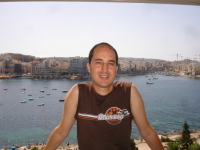
|
Affiliation: |
Biology Dep., Emory University Atlanta, Georgia, U.S.A |
|
About: |
I entered computational neuroscience after an undergraduate degree in electrical engineering and a Ph.D. in computer science. I first worked as a postdoc with Dieter Jaeger on analyzing the parameter space of a multi-compartmental globus pallidus neuron based on recordings from the rat. I am currently doing my second postdoctoral fellowship with Astrid Prinz. My current project investigates activity sensing mechanisms for homeostatic regulation of central pattern generating neuronal networks. My general interest is on finding ways to automatically extract biologically relevant features from large numbers of simulations, organize this information in databases, and find efficient and novel methods for database analysis. At OCNC, I am looking forward to learn more about intracellular signaling cascades for modeling calcium sensing pathways. And, I would very much like to meet new people, have some fun and help realize some cool projects at the same time! |
Ben Dongsung Huh

|
Affiliation: |
Computational Neurobiology Laboratory the Salk Institute USA |
|
About: |
Hi, my name is Ben. I am a PhD student in Computational Neuroscience program in UCSD with Emanuel Todorov in University of Washington and Terry Sejnowski in Salk Institute. I study motor control with optimal control principle and neural network controller. My undergraduate background is physics and I am interested in various theoretical aspects of neuroscience. I'm looking forward to meet you all at Okinawa ! |
Jonathan Hunt

|
Affiliation: |
Queensland Brain Institute and School of Physical Sciences University of Queensland AUSTRALIA |
|
About: |
Hi all. I'm looking forward to meeting you all at Okinawa and learning more about computational neuroscience (and maybe a little more about Japan and Okinawa too!). I'm interested in modeling the development of the primary visual cortex, natural scene statistics and machine learning. I originally studied undergraduate maths and physics in New Zealand and I'm now in Australia pursuing a PhD in neuroscience in Geoff Goodhill's lab. I enjoy kayaking and hiking although I'm not sure how much time I'll get to either while in Japan. See you there. Jonny |
Michael Häusser

|
Affiliation: |
Wolfson Institute for Biomedical Research University College London |
|
About: |
Born in Canada to German parents. PhD at Oxford with Julian Jack. Postdoctoral work with Bert Sakmann at the Max-Planck-Institute in Heidelberg and then with Philippe Ascher at the Ecole Normale Superieure in Paris. Joined University College London in 1997 with the support of a Career Development Fellowship from the Wellcome Trust. Currently Professor of Neuroscience and Wellcome Trust Senior Research Fellow at UCL. Message: Hi everyone - I'm looking forward to meeting you all, and am delighted to return to Okinawa and teach on the OCNC course again. I've taken part in several previous incarnations of the course, and have many great memories of inspiring conversations in this special place. Please don't hesitate to get in touch before, during, or after the course: m.hausser@ucl.ac.uk |
Thomas Knöpfel
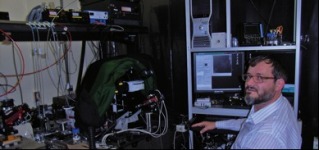
|
Affiliation: |
Neuronal Circuit Dynamics Brain Science Institute, RIKEN |
|
About: |
I was born in Germany, earned MD and Master of Science in 1985, from University of Ulm, Germany. I moved to University of Zurich, Switzerland to obtain my doctorate in physiology in 1985 and Privatdozent (PD) in 1992. In 1989 I became an assistant professor at the Brain Science Institute at the University of Zürich. In 1992, I became a team leader and project leader at Ciba-Geigy Pharmaceuticals (now Novartis). After working as a visiting professor at University College London in 1996, I joined the RIKEN Brain Science Institute as head of the Laboratory for Neuronal Circuit Dynamics in 1998. My main research interests include optical imaging with a focus on modern optogenetic methods to study the dynamics of neuronal circuits of the cerebellum and the olfactory bulb. |
Birgit Kriener

|
Affiliation: |
Network Dynamics Group, MPI for Dynamics and Self-Organization Bernstein Center for Computational Neuroscience, Goettingen, GERMANY |
|
About: |
Hi! My name is Birgit and I will be a OCNC-tutor for the second time this year. I’m really looking forward to returning to the beautiful sub-tropical island of Okinawa! I live and work as a postdoc in Goettingen, a small town in the middle of Germany. My work focuses on the spiking and rate dynamics in neuronal networks. Special emphasis is put on the impact of network structure and how we can read out features of it from the observed activity dynamics. In my analytical work I make use of time series analysis, point process theory, non-linear dynamics, and methods from statistical physics. For all things not amenable to paper and pencil alone (i.e. quite often) I use computer models, mostly build with NEST. Other environments I use a lot are Matlab, Python and Mathematica. So, if you have questions, feel free to ask! :-) See you all at the Seaside House! |
Alex Kwan

|
Affiliation: |
Cornell University USA |
|
About: |
I am a PhD student at Watt Webb's lab at Cornell University. Originally I was raised in Hong Kong before moving to Vancouver, Canada. At Cornell, my research focuses on developing nonlinear imaging techniques for neuroscience applications. One project is to use second harmonic generation microscopy to look at polarized microtubules in brain slices. Recently, I'm collaborating with Ronald Harris-Warrick to apply two-photon calcium imaging for studying the role of one group of interneurons in rhythm generation within the mouse spinal cord. |
Yann Le Franc
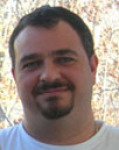
|
Affiliation: |
NIMH, Bethesda, MD & Krasnow Institute, George Mason University, VA USA |
|
About: |
Hi, My main interest is to link the 3 main networks properties: connectivity, intrinsic neuronal properties and synaptic properties, to understand how they interact altogether to generate a guy like me…or you. For this I am using and/or learning to use many different tools and techniques from either Computational Neuroscience (conductance based modeling, small network, information theory, correlation analysis) or Neurophysiology (sharp and patch clamp recording, calcium imaging, organotypic culture) or at the edge such as dynamic clamp. I’ve been student and tutor at the ACCN and I love to participate to these courses because they bring, in a relaxed and hard-working atmosphere, the possibility to learn even more, and more importantly to discuss, interact and work with people we admire through their work. I am excited to come in Okinawa and I am looking forward to meet you all there having fun together. Please contact me if you have any question. |
Debora Ledergerber

|
Affiliation: |
Institute of Physiology University of Bern SWITZERLAND |
|
About: |
I studied biology in Zurich and Lausanne, Switzerland. Now I am doing my PhD in Bern in the group of Matthew Larkum. We are interested in dendritic properties of neocortical pyramidal neurons. Currently I am doing double patch-clamp recordings from soma and dendrites of layer 6 (L6) pyramidal neurons. In the summer course I will work on a NEURON model of L6 pyramidal cells which should help me to compare the data from L6 with other pyramidal cells like L5 and L2/3. I'm looking forward to meeting you all in Okinawa! |
Zachary Mainen

|
Affiliation: |
Champalimaud Neuroscience Programme Instituto Gulbenkian de Ciência
|
|
About: |
I am very excited to be back in Japan, one of my very favorite countries. The picture you see was taken in 2007 on a trip to Jigokudani in Nagano. The river behind me is where the snow monkeys play. Here in Okinawa I hope to see other exotic species and a lot warmer temperatures! I am also very happy to be teaching at the OCNC. Two students from my lab and several of my friends have taken part in the course in the past and their reports have fostered great expectations. I started off my career combining modeling of single cells with in vitro electrophysiology to understand spike generation. Then, as a postdoc, I used two-photon imaging to study the biophysics of glutamatergic transmission at single spines. When I got my own lab, I switched radically. To address more systems and circuit-related questions, I started working with living and soon behaving animals, trying to understand simple decision-making behavior using recordings from behaving animals. Now, my group’s work, while experimental, is increasing informed by theoretical areas such as reinforcement learning and (Bayesian) probability theory. Although we seldom publish them, we routinely use small models to help us understand our experiments. Despite the sometime daunting gap between the cellular and the behavioral phenomena, like many people, I believe the biggest and most challenging goal in neuroscience is trying to form links between such apparently distinct levels and phenomena. I am also increasingly appreciative of what other fields of biology have to offer in neuroscience. In the future, I expect to see a new wave of investigators, such as yourselves, with appreciation and training that spans traditional subfields of neuroscience and even other fields of biology, to greatly deepen our understanding of brain function by making connections that we haven’t even yet imagined. |
Alexander Mathis

|
Affiliation: |
LMU & BCCN Munich GERMANY |
|
About: |
After graduating in Mathematics with specialization in Topology last year in autumn, I started a PhD in Computational Neuroscience at Prof. Herz' lab at the Ludwig-Maximilians-University in Munich, Germany. I am Interested in pattern formation in neuronal networks and the link between neuronal activity and network architecture. I am very delighted to have the possibility to come to Okinawa and to meet you all! |
Ken Nakae

|
Affiliation: |
Department of Statistical Science The Graduate University for Advanced Studies JAPAN |
|
About: |
My name is Ken Nakae. I am a Ph.D. student at the Graduate University for Advanced Studies in Japan. My current research is statistical estimation of phase response curves and application in neuroscience. In this course, I want to find new subjects of neuroscience from the viewpoint of statistics. I do not only study in this course but also want to talk about neuroscience and statistics (machine learning) to you. I am looking forward to meet you in Okinawa. |
Mario J. Negrello, F.

|
Affiliation: |
Dept. of Cognitive Science University of Osnabrück GERMANY |
|
About: |
Greetings to peers that work on understanding thinking; may our valiant efforts be rewarded with comprehension and insight! Okinawa sounds like the perfect setting for the exchange that will create potential for ideas, and I am happy to be a member of this group that I am looking forward to meet personally. I am interested in the interplay between regularities and variabilities of neural systems, and how evolution seems to converge on particular designs to solve particular problems. The mother question I pose is: what is the space of structural and biophysical designs that support behavioral function? In my PhD Thesis I have used structural evolution of recurrent neural networks to solve embodied problems, and looked at the dynamical repositories, to probe for invariances (anatomical, dynamical) with respect to behavioral function. As Paul Dirac wrote, 'the important things of the world are invariants... of... transformations'. Results suggest that the same is valid for brain design. |
Cian O'Donnell

|
Affiliation: |
Neuroinformatics Doctoral Training Centre, University of Edinburgh UK
|
|
About: |
Hey! I'm a computational neuroscience PhD student in Edinburgh. I'm supervised by Mark van Rossum (theorist) and Matt Nolan (experimentalist). I used to study physics, but then I got bitten by the neuroscience bug. For my PhD I've been building biophysical models of single neurons. I'm mostly interested in neural noise, dendritic spines, synaptic plasticity and entorhinal cortical grid cells. Looking forward to OCNC! |
Liam Paninski

|
Affiliation: |
Statistics Department Columbia University
|
|
About: |
I am currently faculty in the Statistics Department at Columbia University. I am also affiliated with the Center for Theoretical Neuroscience and Doctoral Program in Neurobiology and Behavior here. Previously, I was a senior research fellow at the Gatsby Computational Neuroscience Unit, at University College London. Before that, I was a grad student at the Center for Neural Science, at NYU. For much of that time I was in Eero Simoncelli's lab; I also did some work with Mike Hawken and Alex Reyes. And before that, I was an undergraduate at Brown University, where I was introduced to neuroscience research in John Donoghue's lab; the challenges of trying to understand multielectrode recordings from the motor cortex there encouraged me to learn as much about statistics and neural coding as I could. I'm very much looking forward to the course; I've heard great things about it. |
Marcus Petersson

|
Affiliation: |
Computational Biology Royal Institute of Technology, Stockholm SWEDEN
|
|
About: |
A year ago I started as a PhD student in the Neural Dynamics Lab. with Dr. Erik Fransén as my supervisor. We use computational neuroscience techniques to explore the intrinsic cellular properties of memory, among other things, and we form a part of the multidisciplinary project called Stockholm Brain Institute. I have a background in applied physics and electrical engineering, and my interest in neuroscience has not stopped increasing since I first came in contact with the field during my master thesis. Specifically, I am studying mechanisms relating to metabotropic glutamate receptors and transient receptor potential channels and how these contribute to slow synaptic integration. I'm really looking forward to our Okinawa experience, and hope that some of you might share my interest in scuba diving. |
Venkatakrishnan Ramaswamy

|
Affiliation: |
Computer Science University of Florida USA |
|
About: |
My name is Venkatakrishnan Ramaswamy. Since it is mostly unpronounceable:), everyone calls me Venkat (and you should too). I am working on my Ph.D. at the University of Florida, where I am advised by Arunava Banerjee. Being from a Computer Science background, I am especially intrigued by the computational principles that underlie the workings of the brain. In particular, this is because on several important problems, Computer Vision being one example, biological systems are considerably superior to the best computer algorithms we know. This along with the insatiable curiosity to know how our brains work is what got me into Computational Neuroscience. I am interested in what constraints local properties of neurons impose on the computational abilities of these networks, purely from a theoretical standpoint. As a first problem, my advisor and I have been looking at an abstract mathematical model of a neuron and we are studying acyclic networks of neurons as spike-train to spike-train transformations to see what can be said of them theoretically.I am really looking forward to OCNC. I have a lot to learn from all of you. Not being a biologist (and indeed having never done a dissection), I particularly hope to get some insights on the |
David Redish

|
Affiliation: |
Department of Neuroscience University of Minnesota
|
|
About: |
I’m very much looking forward to interacting with the students and faculty in Okinawa. Seaside House is a wonderful setting to do science and the people involved are really great. I’m looking forward to seeing old friends and meeting new ones. I’ve been working on computational neuroscience since my graduate days at Carnegie Mellon (with Dave Touretzky) and on experimental neuroscience since my postdoc (in Tucson, Arizona with Carol Barnes and Bruce McNaughton). In my lab at the University of Minnesota, we do both experimental neuroscience (multi-electrode recording), computational and theoretical neuroscience (modeling those recordings, deriving the implications of them), as well as new analysis/algorithm development (getting more from those recordings). It’s always been my firm belief that the key to moving forward is to bring all these tools (experimental, modeling, theory) together. My presentation will look at questions of cognition in hippocampus drawing from these three perspectives. Looking forward to seeing you all at Seaside House in Okinawa. PS. Since I won’t have time to talk about it in the presentation, feel free to ask me about my theoretical/modeling work on addiction while I’m there!
|
Imad Riachi

|
Affiliation: |
Blue Brain Project EPFL
|
|
About: |
Hello everyone!! My name is Imad Riachi, I am Lebanese and I am doing my PhD in the context of the Blue Brain Project with which I have been since day one. I am particularly interested in understanding the interplay between the microcircuit connectivity and the dynamics of the neocortical column. I come to Neuroscience with an engineering background: computer engineering, micro-engineering and robotics. Apart from my research, I am big fan of music (especially Jazz), and I have a keen interest in social entrepreneurship. This is going to be my first time in Japan, and I am looking forward to the whole Okinawa experience and to meeting all of the OCNC 2009 class and faculty!
|
Chris Roome

|
Affiliation: |
Otago University NEWZEALAND |
|
About: |
Hello! My name is Chris Roome and I’m currently undergoing a PhD in Physiology at Otago University, New Zealand. I was inspired to pursue research in neuroscience after completing a biophysics course during my physics degree at Imperial College London and so last year I begin my PhD in New Zealand! I’m interested in how synapses work and within the Empson laboratory at Otago University we use electrophysiology and calcium fluorescent imaging techniques to assess how calcium signals influence the function of synapses in the cerebellum. A leap from research in physics to physiology is a challenging crossover and I enjoy applying approaches common to physical sciences to solve physiological problems. I’m delighted to be attending the OCNC this year to develop these interests and am grateful to the organisers for providing this unique experience – and in such a beautiful setting! I look forward to meeting you all in June. |
Yousef Salimpour

|
Affiliation: |
Computational Neuroscience Unit, School of Cognitive Sciences Institute for Research in Fundamental Sciences (IPM),Tehran IRAN |
|
About: |
I received my B.Sc. and M.Sc. degrees in electrical engineering and biomedical sciences. Currently I’m in my last year of PhD in Computational Neuroscience and NeuroEngineering in School of Cognitive Sciences, Institute for Research in Fundamental Sciences at Tehran, Iran. After passing some courses in cellular and molecular neurobiology, neurophysiology, neurosciences, Computational Neuroscience, Visual Neuroscience and Computational Neuroscience of Vision, I joined VisionLab which is directed by Dr.Esteky. Now I am member of electrophysiological recording team from inferior temporal cortex of macaque monkey based on multi electrode recording and offline sorting. Our objective is the investigation of the neural mechanism of visual object recognition and categorization. |
Masaaki Sato

|
Affiliation: |
Laboratory for Synaptic Function RIKEN BSI JAPAN
|
|
About: |
Hi everyone! My name is Masaaki. I was born and raised in Saitama, Japan. Professionally, I was trained as a molecular neurobiologist in Kyoto, studied systems neuroscience in San Francisco and came back very recently to RIKEN Brain Science Institute, which is located near my home town. My research at University of California, San Francisco investigated how experience-dependent plasticity in the adult brain differs from that in the juvenile brain using mouse visual cortex as a model system. Now I’m hoping to create a computational follow-up to this work through participating in this course. Besides science, I enjoy reading, traveling and hanging out with my friends with coffee or beer in my hand. I also love the arts in general and am particularly into theater, films and architecture now. Truth be told, I'm extremely excited about attending this course because I've never been to Okinawa even though I'm Japanese! I’m very much looking forward to seeing you all in such a beautiful and exotic part of Japan! |
Tali Sharot

|
Affiliation: |
Wellcome trust centre for neuroimaging University College London UK
|
|
About: |
I am a postdoctoral fellow at UCL’s functional imaging lab. I study the interaction between emotion, decision making and memory, with a special interest in how we estimate our future emotional reactions to unknown outcomes. I use fMRI and behavioural techniques to explore these topics. At OCNC I will use modelling to better understand specific processes underlying the optimism bias. |
Yu Shimizu

|
Affiliation: |
Computational Neuroscience Laboratories ATR |
|
About: |
My name is Yu (I avoid using: I am Yu). I love nature and at the same time am fascinated by high-tech gadgets. I studied Biology and Mathematics, but ended up working in MRI physics and bio-medical image and signal processing. Last year I failed to receive a scholarship for joining a project which tries to help protect the Dugongs in Okinawa by exploring their actual habitats and analysing underwater recordings. Instead, I joined ATR, where I have started working in the field of BCI and found a new interest in Neuroscience (of which I unfortunately know very little...). Now I am as lucky as to have the opportunity to participate in the OCNC seminar. I am looking forward to meeting you all in what promises to be a very inspiring training course. |
Olav Stetter

|
Affiliation: |
Department for Nonlinear Dynamics Max Planck Institute for Dynamics and Self-Organization, Göttingen, GERMANY |
|
About: |
Hi everyone! I work in the Lab of Theo Geisel on the ways that structure emerges in networks, and the consequences this has on the dynamics of the system. Right now I am concerned with the temporal evolution of avalanches in cultured neuronal networks as studied by Marom, Moses, Eckmann and others. Other than that, I do biking and volleyball, and a bit of singing and guitar. I am also interested in graphic design and typography, classical literature, alternative and electronic music, and a million other things.And I have always wanted to visit Japan, actually had a ticket at one point, but never managed to go. So I am very much looking forward to finally see this part of the world and of course meet all of you!
|
Charles Stevens
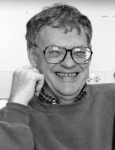
|
Affiliation: |
Molecular Neurobiology Laboratory The Salk Institute
|
|
About: |
After studying medicine and biophysics, I took a faculty position at the University of Washington where I combined theory and experiment to study fundamental mechanisms of spike generation and synaptic transmission. During my time in Seattle I spent a sabbatical year in Leiden doing statistical physics. After Seattle, I moved to Yale Medical School where I started work on properties of hippocampal synapses. I then took a position the Salk Institute where my work shifted to the study of mechanisms of neurotransmitter release at central synapses. About five years ago, I made a transition to a mainly theoretical approach, always data based, to discover the design principles that endow neuronal networks with a scalable architecture. |
Klaus Stiefel

|
Affiliation: |
Theoretical and Experimental Neurobiology Unit Okinawa Institute of Science and Technology
|
|
About: |
I got my undergraduate degree in microbiology from the University of Vienna and my PhD in zoology from the Max-Planck Institute for Brain Research in Frankfurt (with Wolf Singer). Then I did a post-doc with Terry Sejnowski at the Salk Institute in La Jolla. In 2006 I joined OIST and established the Theoretical and Experimental Neurobiology Unit. Message: Dear participants! Welcome to Okinawa! I hope you will be able to make the best of this opportunity. I would like to encourage you to make this the three weeks which will scientifically fertilize your next three years of research. You will have the chance to not only listen to good talks, but also to talk to the speakers, tutors and to each other. Do so! Also, I want to encourage you to try something new. Don't just continue the project you are working on at home, but rethink your approach, and maybe do something completely different for 3 weeks. We don't object if you want to change your suggested project based on new ideas you have gotten while on this beautiful island. Use new software, introduce stochasticity into your simulations, etc. And, finally, please enjoy the beach, ocean, social life and the Japanese food. |
Michael Strüber

|
Affiliation: |
Bartos lab University of Aberdeen UK
|
|
About: |
Hello, my name is Michael Strüber. I study Molecular Medicine at the University of Freiburg. However, currently I write my Diploma thesis in the laboratory of Marlene Bartos at Aberdeen University, where I’m also going to start my PhD this summer. So far, I worked on the hippocampal dentate gyrus doing patch-clamping. In general, I’m interested in how neuronal networks process information and enable us to think and to act. I’m looking forward very much to these weeks in Okinawa.See you there soon! |
Gregory Stuart

|
Affiliation: |
Neuronal Integration Group The John Curtin School of Medical Research |
|
About: |
I was born in Melbourne and completed a BSc at Monash University before doing a PhD in neuroscience at the John Curtin School of Medical Research (JCSMR) in Canberra. After completing my PhD I worked for 5 years as a postdoctoral fellow in the Max Planck Institute for Medical Research in Heidelberg, Germany, before returning to the JCSMR to establish my own laboratory where I have been ever since (apart from a brief stint in Freiburg, Germany, from 2002 to 2004). Since 2005 I have been the Head of the Division of Neuroscience at the JCSMR. Message: Hi, and welcome to the course. My research is focused on understanding how single neurons in the brain process information. This information is received in the form of synaptic input, and is converted into the generation of action potentials – the main output signal of neurons. In my laboratory we address this issue using a range of techniques including electrophysiology and imaging, as well as computational modeling. This work is focused on the properties and function of single neurons in the cortex, with an aim to understanding cortical processing of sensory input. As the vast majority of synaptic input to neurons is made onto their dendritic tree one of my main areas of research is the function and properties of neuronal dendrites. In addition, we also investigate the cellular mechanisms underlying synaptic plasticity in the cortex, as well as how changes in cortical neurons contribute to neurological disorders such as epilepsy. This is my first time to Okinawa, and I look forward to meeting you all. |
Matthijs Van der Meer

|
Affiliation: |
Redish lab, University of Minnesota USA |
|
About: |
Please do not be alarmed by the unlikely sequence of letters in my firstname. Most people simply call me Matt! I'm delighted to be part of OCNC 2009, because it represents and promotes something I believe is deeply important to neuroscience: the integration of work at different levels or scales through computational tools and principles. The scientific program and the student projects run the range from channels to behavior, challenging us to make connections. I look forward to exploring these exciting possibilities together, in the serene and inspiring surroundings of Okinawa and Seaside House. In my research, I have sought to combine experiment and theory: first, in the head direction system in rats (PhD Neuroinformatics, University of Edinburgh, UK) where I built network models and recorded from freely moving animals on a navigation task, and currently, in applying ideas from reinforcement learning to study planning processes at choice points, using multi-site ensemble recording in behaving rats. |
Ekaterina Vinnik

|
Affiliation: |
Auditory behavior and cognitive development lab Cognitive Neuroscience Sector, SISSA, Trieste ITALY |
|
About: |
My background is medicine. I’m interested in systems neuroscience and sensory systems, particularly in auditory scene analysis and hippocampal function. Though my approach is experimental, I seek to understand organization of subcortical and cortical circuits as basis of cognitive processes, for which computational approach and knowledge of channel properties are essential, so I'm looking forward for the course. Cheers from Trieste! |
Brett Vintch

|
Affiliation: |
Center for Neural Sciences New York University USA
|
|
About: |
As a Ph.D student working in the Movshon Laboratory at NYU, I am recording cells in V2 and asking how the information from earlier processing stages can be combined to explain observed response properties. In general, I am interested in the computational principles underlying hierarchical neural systems and I would like to approach this problem from a variety of angles. My educational background is in engineering and computational neuroscience and, as such, I very much appreciate the symbiotic relationship between theory and experimental physiology. It will be a pleasure to get to know you all this summer. |
Amelia Waddington

|
Affiliation: |
Biosystems Group School of Computing, University of Leeds UK |
|
About: |
Hi, I’m Amelia, a second year PhD student at the Universtiy of Leeds, in the UK. My research is computational and focuses on how neural activity influences the development and reorganisation of networks. In particular, looking at synaptic plasticity. Currently, I am investigating how different patterns of activity lead to the emergence of different structures in random networks. At Okinawa I intend to apply my research to model systems, Specifically, the role of synaptic plasticity in establishing the correct function of locomotive central pattern generators in the spine during development and after injury. I’m very excited about my first visit to Japan and looking forward to meeting everyone on the course. |
Ping Wang
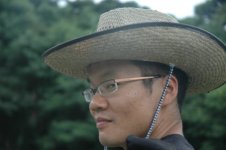
|
Affiliation: |
Computational Neurobiology Laboratory Salk Institute USA |
|
About: |
I am a jack of all trades desperately trying to master one. After completing degrees in Electrical Engineering, Computer Science and Biology at Stanford, I ended up in Terry Sejnowski’s lab at the Salk Institute in San Diego. I work on computational models of thalamocortical networks in the hopes of better understanding how neurons encode information. I study single neurons in a network context, and am looking to expand to network and systems level implementations. In particular, I am interested in issues of synchrony and temporal population coding. I’m also an avid swimmer / diver, lover of cultures and languages, and a traveler / adventurer…and I’m very excited to meet all of you at the upcoming OCNC adventure! |
Jeff Wickens

|
Affiliation: |
Neurobiology Research Unit Okinawa Institute of Science a
|
|
About: |
Jeff Wickens completed a medical degree (1982) and a PhD (1991), at the University of Otago. He became a faculty member at the University of Otago in 1987 and obtained a personal chair in 2004. In 2007 he was appointed as a principal investigator at the Okinawa Institute of Science and Technology. He works on the basal ganglia, combining experimental and computational approaches to investigate learning mechanisms and local circuit operations of the striatum. Message: Since my early work on a theory of the striatum I have pursued my ambition to develop a computational theory of information processing in the basal ganglia, one which is faithful to the neurobiology and also able to account for its contribution to purposeful behaviour. I believe that theory has a vital role to play in advancing our understanding of the brain and computational modeling is a powerful tool for bringing theories and experimental results into interaction. This approach is really in its infancy, and in my opinion giant steps still lie ahead of us. There is much work to be done, and courses like this are a great way to accelerate the development of the field. I hope you will find here some of the tools you need to advance this field and fulfill your own theoretical ambitions. |
G.Elliott Wimmer

|
Affiliation: |
Cognitive Neuroscience, Dept. of Psychology Columbia University USA
|
|
About: |
My current research interests focus on learning and memory systems in the brain, studied behaviorally and in functional imaging. In particular, current projects involve examining reinforcement learning in situations where the brain can also take advantage of relational or long-term memory to guide choices (i.e. an intersection of striatal and hippocampal functioning). At the course I hope to pick up skills that may lead to future research in more detailed computational modeling and perhaps extent into work on artificial agents. |
Daniel Wolpert

|
Affiliation: |
Department of Engineering, University of Cambridge |
|
About: |
Daniel Wolpert first qualified as a medical doctor and then completed a D.Phil. in the Physiology Department of Oxford University. He worked as a postdoctoral fellow in the Department of Brain and Cognitive Sciences at MIT. He joined the Sobell Department of Motor Neuroscience, Institute of Neurology as a Lecturer in 1995, and in 2005 moved to the University of Cambridge as Professor of Engineering. He is a fellow of Trinity College. His research interests are computational and experimental approaches to human sensorimotor control. Message: This tutorial is well-suited to theorists who would like to learn how to test their models or develop algorithms that are inspired by human performance, as well as to experimentalist who wish for a stronger link to theory. |
Wan-Qing YU

|
Affiliation: |
Nanjing University CHINA |
|
About: |
Dear all, I am Wan-Qing Yu, from Nanjing University, China. I studied physics during my undergraduate time, and I really like computational neuroscience. My research interest is about working memory, decision making and selective attention. I appreciate that OIST provide an opportunity to bring theorists and experimentalists to talk to each other, and I am ready to learn from you guys. See you in June. |
Junmei Zhu

|
Affiliation: |
Frankfurt Institute for Advanced Studies (FIAS) Germany |
|
About: |
My background is in computer science, under a physicist advisor and among neuroscience students at the University of Southern California. I am interested in the underlying principles of brain organization. In particular, I study the brain as a self-organizing dynamical system using coupled nonlinear differential equations. I have been developing methods to analyze the dynamics, aiming to make explicit the connection between local interaction or learning of a system and its global behavior and functionality. I have focused on the visual system as a model system, in both function (correspondence problems) and ontogenesis (cortical maps). |



